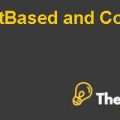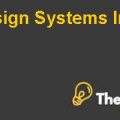Part A: Company Profile (300 words)
a. Description of the Business Model
P&G’s business model relies on the growth and success of existing product line, along with bringing new products to the market too. P&G’s products are sold in more than 180 countries around the globe through mass Merchandisers, grocery stores, department stores, salons, high frequency stores which serve numerous bulk buyers daily in developing markets. It operates in a highly competitive industry (Reuters, 2014).
The company works in collaboration with the customers to improve their in-store presence and tries to achieve the first moment of truth when the customers shop in the stores for P&G’s products. P&G wants to achieve the customer's second moment of the truth where the customer experiences the value added services. P&G offers and makes ongoing purchases for its product lines. A continuous growth strategy is fostered in the organization to innovate and create new products and help the company better manage the brand. In order to sustain an organic growth in the product development, the company invests a lot in Research and Development which will help it thrive in the long run, but whose benefits can't be reaped in the short run (Reuters, 2014).
b. Types of Products
P&G offers a wide array of products that can be classified into segments such as, Beauty, Grooming, Health Care, Fabric Care and Baby Care. The beauty segment is further divided into Beauty care Antidepressants, Deodorants, Cosmetics, Personal Cleansing, Skin Care, Prestige, Salon Professional items and other Hair Care products for the local market. The health care segment too is divided into feminine, oral, and Personal Health Care. Moreover, the Fabric & Home care segments include the home care products, batteries, pet care related products, etc. Lastly, the baby care items include pampering, diapers, wipes, etc. whereas the family care items include towels, tissues and toilet paper etc. (Reuters, 2014)
c. Competitor analysis
(Commission, 2013, 8) The closest competitor of P&G is Unilever (UL) whereas others include:
- Avon
- Clorox Company (CLX)
- Colgate-Palmolive Company (CL)
- Energizer Holdings (ENR)
- Henkel (HEN-FF)
- Kimberly-Clark (KMB)
- L'Oreal
- Reckitt Benckiser (Commission, 2013, 8)
d. 2000’s: Efforts to improve Innovation success rate
Despite of richer, innovative culture that thrives at P&G, the 2000’s were quite drastic in terms of sales and share price decline. Analysts reported that only 15% of the innovation projects were translated into hard numbers, which shook executives to look deep into the innovation process.
Part B: P&G’s Four Types of Innovation (350 words)
a. P&G’s Four Types of Innovations
i. Sustaining Innovation
This is P&G’s “er” products, which is the addition of a value added feature in the existing product line. Helps in retaining the existing customer base and also in attracting new customers while preventing the product from getting mature.
ii. Commercial Innovation
This innovation takes into account the efficient use of creative marketing which helps in embossing the brand in the subconscious. The broad and novel marketing, promotions and packaging helps thrive sales and revenues for the company.
iii. Transformational-Sustaining
This innovation is transformational and sustainable for the existing products. With marginal services and features added on, the business can transit to a basic change, helping the company to capture a good chunk of market share, sales margins and consumer's recognition.
iv. Disruptive Innovation
This innovation features a completely different and novel business opportunity that helps the company in diverting to a completely new business with fresh new offerings. As the name suggests this is disruptive in nature, as it disturbs the present business at the exposure of a new one.
b. Ways by which P&G Improved Innovation Output
In order to improve the company’s innovation output, the company initially launched the prototype of a Future Factory, where it can create and recreate ideas and help the company in aligning their innovation success rate with that of industry rate. For this, the factory focused primarily on smaller projects with bigger initiatives to embrace innovation. Three major improvements to the existing ways of innovating were made which include:
- P&G’s emphasis on transformational sustainability innovations as a road in between to modify existing product lines for the existing customers and attract new customers through the product innovation, e.g. Crest Brand Extensions (Crest White Strips, Crest 3D white, Crest Pro Health)......................
This is just a sample partial case solution. Please place the order on the website to order your own originally done case solution












